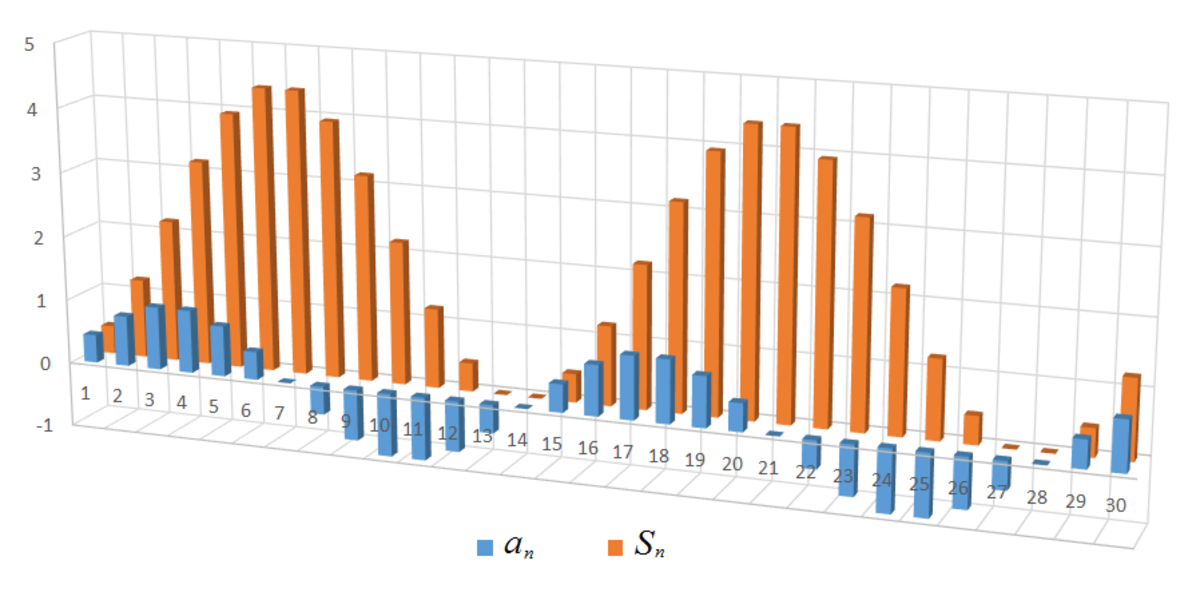SAT1000 - P929
Given that S n = k = 1 ∑ n sin 7 k π , where n is a positive integer, how many positive numbers are there for S 1 , S 2 , S 3 , ⋯ , S 1 0 0 ?
Have a look at my problem set: SAT 1000 problems
The answer is 86.
This section requires Javascript.
You are seeing this because something didn't load right. We suggest you, (a) try
refreshing the page, (b) enabling javascript if it is disabled on your browser and,
finally, (c)
loading the
non-javascript version of this page
. We're sorry about the hassle.
2 solutions

We note that a n = sin 7 n π is periodic with a period of 1 4 ; a n + 7 = − a n and a 7 n = 0 , where n is a positive integer. Therefore S n = ∑ k = 1 n a k is also periodic with a period of 1 4 , S n = S 1 3 − n and S 1 4 n = 0 . Let S 0 = sin 0 = 0 , which does not affect S n for n > 0 . Then S 1 3 = S 1 3 − 1 3 = S 0 = 0 . There are S 1 3 = S 1 4 = 0 within a period and the rest of S 1 , S 2 , S 3 , ⋯ S 1 2 > 0 . Therefore there are 1 0 0 − 2 × ⌊ 1 4 1 0 0 ⌋ = 8 6 positive numbers fpr S 1 , S 2 , S 3 , ⋯ S 1 0 0 .
All the S i ′ s will be positive except for i = 1 3 , 1 4 , 2 7 , 2 8 , 4 1 , 4 2 , 5 5 , 5 6 , 6 9 , 7 0 , 8 3 , 8 4 , 9 7 , 9 8 where the values go zero. Hence the required answer is 1 0 0 − 1 4 = 8 6 .